I get it. A lot of us are still working from home, self isolating, or following social distancing protocols. We’re barely leaving our houses. Why worry about building a get home bag for emergencies when we spend all of our time at home?
That’s a fair point. I actually haven’t left my neighborhood block in a solid two weeks now. I’m a little worried about my car’s battery life! Even so, I firmly believe that this is the best time to start preparing a get home bag. If you’ve already built one (good for you!), this is a great time to go through it and make sure everything’s up to date.
Wait, Isn't This a Finance and Money Blog?
Until now, I’ve mostly written about budgeting, saving money, debt payoff, and the odd home improvement DIY post (with more in the works). This isn’t a prepping blog.
Yet, I find myself focusing on preparedness lately. If you’ve read my budget reports, you already know that an interest in prepping lead me to focus on personal finances.
There’s a lot going on right now. We’ve experienced a collective trauma with the sudden shift in our lifestyles and senses of security. We’re experiencing illnesses, deaths, job loss, income reduction, isolation, major changes in how we work and play…
While I’ve marketed as a personal finance blogger, truly, I’m a personal challenges blogger.
I focus on challenges that occur within in the home and budget. Hopefully, I also offer solutions to help you overcome them! We’re in challenging times, and I have a feeling we’re not yet finished. As a result, I’ve been planning lots of solutions to help me conquer these new challenges.
Planning, my friends, is how we improve our situations and avoid major pitfalls.
What is a Get Home Bag?
In the very simplest terms, a get home back is exactly what it sounds like; a bag of supplies that helps you get home if your normal methods aren’t available.
If you’re stuck, and you can’t find another way home, your get home bag holds just enough supplies to help you walk back home in relative safety and comfort.
Therefore, a get home bag should be lightweight, portable, and filled with useful essentials in the event that you are forced to walk home or find safety on foot.
This isn’t a survival backpack. It won’t keep you alive in the woods until the emergency ends!
Want more preparedness info? Check out these posts!
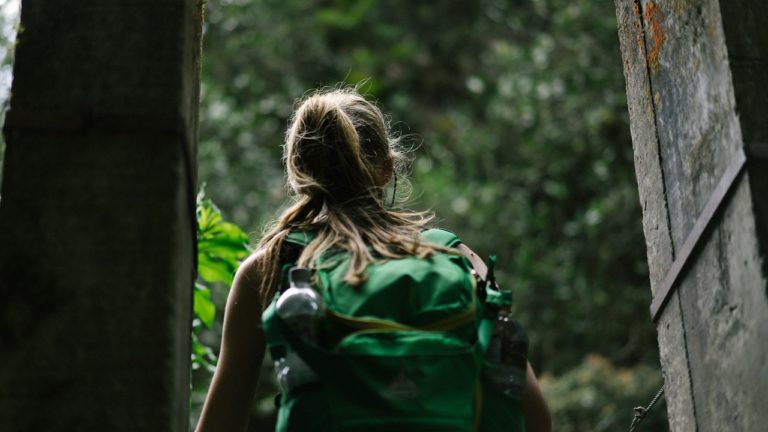
Why You Should Start a Get Home Bag Now
It’s totally normal to assume that bad things will never happen to you, or hope that if they do, you’ll always be able to find help. So many people say they’ll just hop in the car and drive home if something happens. They’ll phone a friend or call an Uber. Sadly, that’s not always the reality.
Unexpected things happen every day to people who never saw them coming. Many of us have learned recently that life can change in the blink of an eye. One minute, everything’s normal. The next, you’re watching a fist fight happen over some toilet paper.
Today, I’ve compiled 6 of the biggest reasons I believe that everyone should have a get home bag prepared.
1. We Spend Tons of Time Away From Home
Well, we did. And we will again. If you work outside the home, you probably spend a good chunk of your day elsewhere. Working, commuting, going for lunch, stopping at the store on the way home…
It’s not uncommon for me to be at work for 10 hours on top of my 1 hour (or longer in traffic) round trip commute. There are also a handful of days where I must stay at work 12 plus hours for events. That’s a lot of time for the ish to hit the fan.
Then of course, there are shopping trips, visits with family, special events, celebrations, parties, school events, hobbies, athletic activities… I know they’re not happening right this minute. But they will come back! You’ll go out again. Maybe even more than you were to make up for all this cabin fever.
And while you’re out, things can happen that prevent you from driving back home, using public transportation, or even walking your usual route.
2. You Can't Always Predict the Future
Sometimes, you can see trouble coming. More often, it sneaks up on you. These don’t even have to be big problems! Minor inconveniences become huge if you’re unprepared.
It probably won’t be an EMP or world ending crisis that strands you, either. Here are some situations that might prevent you from getting home.
Mechanical Problems
- dead car batteries – This could happen to lots of us when we go back to work.
- flat tires – If you have a spare, one is no big deal. But what if you get 3 like Mr. P&P did once? He ran over a bunch of nails in the road and barely rolled into town on 3 flat tires.
- car breaks down – Remember our Summer of Hell post? Mr. P&P was lucky that his car broke down only a mile from the hotel and not on the other side of town. I couldn’t have rescued him because I can’t fit a carseat in my car!
Grid Issues
- cell phone or cell towers die – good luck finding a pay phone nowadays!
- public transportation shuts down or unexpectedly changes – Y’all, this happened to us TWICE! The first time, we were stranded in a rough part of town when an accident on the dart tracks shut down the whole system. It was the middle of the night, nothing was open, and Uber wasn’t a thing yet. The second time, their running schedule didn’t match the posted schedule. Stranded at the train station in the middle of the night in February. We don’t take the dart anymore…
- Electromagnetic issues – Hopefully, we never have to worry about an EMP, terrorist attack, or solar flare, but it’s always a possibility. Did you know an electromagnetic storm cut power to huge chunk of Quebec in 1989? How about the Carrington Event in 1859? Back then, it only disrupted the telegraph system, but today, it could take days, weeks, or even months to get the grid working again. If another major solar flare hits our planet, anything with a circuit board could stop working permanently.
Safety Concerns
- hurricanes, tornadoes, earthquakes, winter storms, or other severe weather blocks the roads – We don’t get bad winters often, so when we do, it’s extra dangerous. Many years ago, we had a storm so bad that it shut down the highway (In Texas, the highway is how you get anywhere) and stranded cars in snow with freezing temps for days.
- civil unrest or dangerous protest block your way – Protests are still happening daily. You can’t anticipate when you might get trapped or your workplace might become unsafe.
- a sudden health emergency while traveling – Accidents happen. If they happen while you’re away from home, you’ll want to have access to a basic first aid kit. Learn how to use one, and it can help you avoid a life threatening emergency while seeking help.
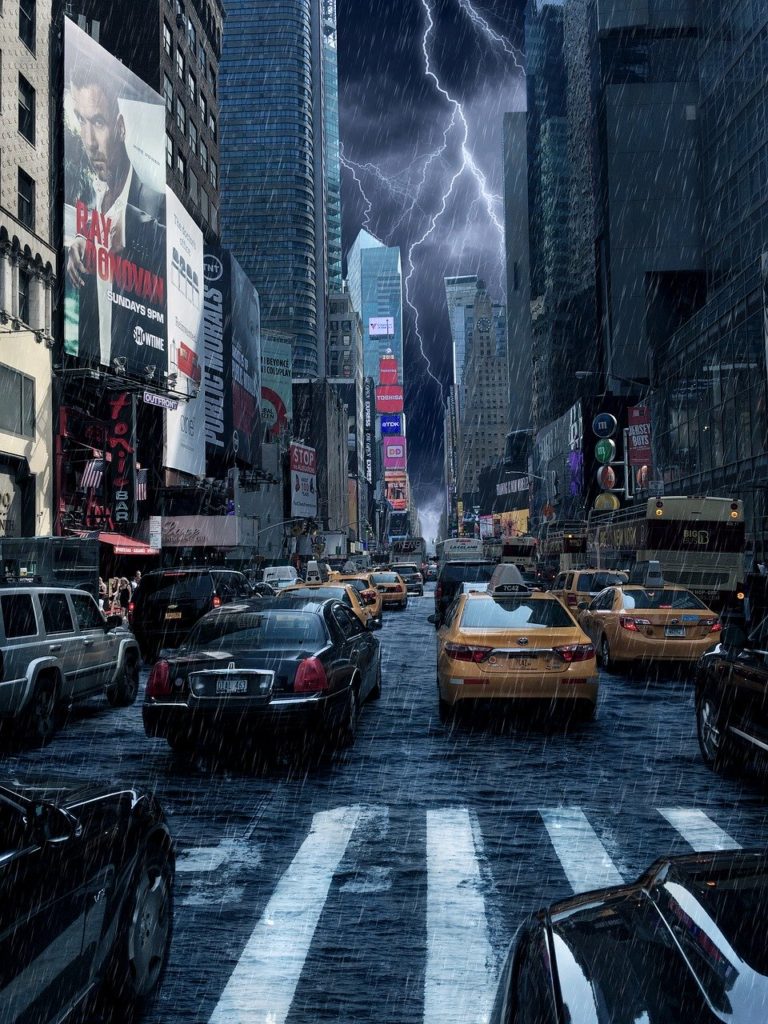
3. Your Get Home Bag Can Help Others in Need
I remember probably 15 years ago, when a friend’s emergency car kit helped a stranger. He was supposed to meet me for lunch, but on the way, the car in front of him broke an axel going full speed on the highway. In August.
The car was destroyed, and the driver was shaken up pretty badly. She also had babies in the car. Remember, it’s August in Texas. It’s 105 degrees out with no shade.
Luckily, he could stop and help the family while they waited for help. It didn’t take much, just a cell phone, water, and little bit of climate control.
You don’t have to stop and supply every broken down vehicle you see, but when you’re prepared, you have the power to show good citizenship and help another human. Turn a life threatening problem into a cumbersome inconvenience.
4. You Might Have Some Time Before Returning to Work
People are starting to return to work. Many more will slowly reintegrate in the coming weeks and months. If you’re a teacher like me, you’re probably homebound until at least July because of virtual learning and now, virtual summer training.
The best time to prepare for an emergency is before it happens, not after! If you’re not back to your usual commute yet, start building your bag BEFORE you return! Nobody really knows what to expect as we begin reintegrating into the world. Get ready before getting back out there.
5. Disruption is Fresh on Our Minds
Raise your hand if you’ve recently experienced a major disruption to your normal life! I’m just going to assume you raised it…
Did these disruptions changed the way you plan? Shop? Spend your money? Statistics suggest that it probably did. That makes right now the best time to plan for future emergencies.
You might have a better idea of the holes in your former preparedness plan. I know I do! We tend to learn through experience and mistakes. Now that you know where you lacked preparations, apply that learning to your get home bag. If you forgot to account for it at home, you’d probably forget it in a get home bag, too.
6. Get Home Bags Can Save You Money (and Frustration) Later
Have you ever had to buy a whole container of something you’ve already stocked at home because you’re unprepared? I have.
Whole bottle of Tylenol for a headache when I’ve got it in bulk at home.
Entire box of feminine care products that I don’t even like because I wasn’t prepared.
Cutting stuff with my teeth because I don’t have a sharp edge in my car.
At my worst, I had to buy an entire manual breast pump system because I broke a vital component and didn’t have extras stored at work.
Your get home bag holds everything you need to handle these inconveniences, and you can access it at anytime. When you pack for emergencies, you don’t have to scramble (and pay a premium) to manage them.
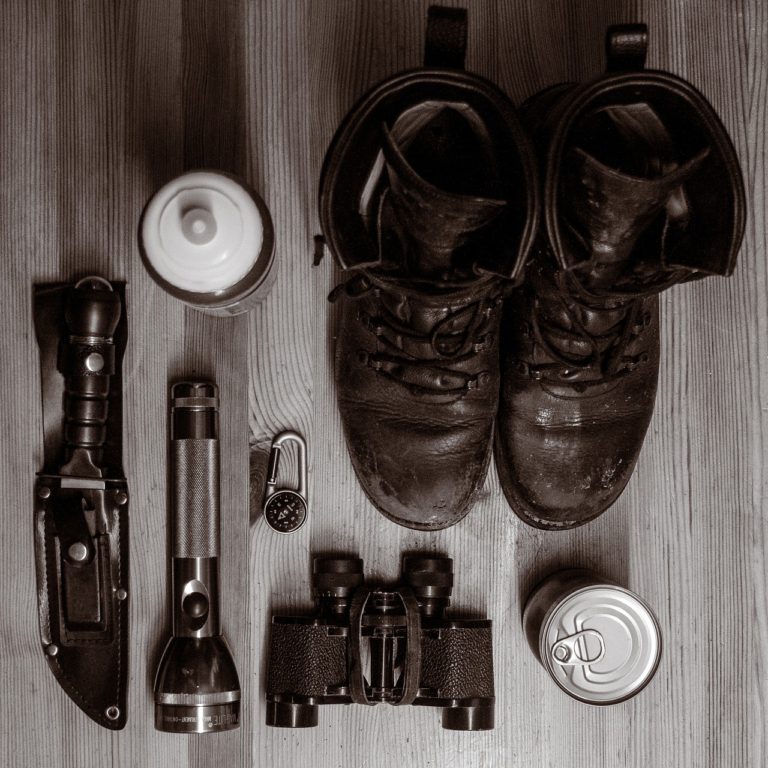
Creating a Get Home Bag - The Basics
Hopefully, I’ve convinced you of why you need one, but what’s next?
I will have a much more detailed post coming up soon that will break down everything you should consider, but for today, here are a few of the absolute basics to start thinking about.
Take a moment to review your travel distance and terrain, physical abilities, likeliest emergencies, and basic needs on the go.
Distance to Travel and Terrain
Imagine your typical commute. Is it a couple miles, a dozen miles, or a hundred? Now take that distance and double it. THAT’S what you need to prepare for.
Following highways, my shortest trip is about 13 miles. Mr. P&P’s is about 2 miles. My mom, who travels across the state for work could get stranded (and has) as many as 100 miles from any town at all. We all need a get home bag, but our needs vary!
If I have to walk all the way home, there’s a chance the highway is also closed. So, instead of a 13 mile walk on paved roads, I have to double my trip (maybe even triple) because I’ve got to go through a nature preserve and then follow the greenbelt home. Trekking through the woods is different from walking down a street. I have to account for both scenarios.
Mr. P&P is the closest to Baby Girl. Walking home 2 miles is no big deal, but what if he has to make the trip with a toddler in tow and no vehicle? That doubles his walk AND drastically changes the circumstances.
If my mom gets stranded, she’s not walking home. She’s making her way to the nearest town. Since there’s no way to estimate how far that will be, she really needs a complete emergency car kit and a 72 hour survival bag.
Your Physical Abilities
What can your body handle? How fast can you realistically walk, and how much can you safely carry?
If you backpack or hike, you’re in luck. You already know the answers. If not, it might be time to (safely!) find out. Hint: it’s a lot less than you think!
I learned first hand how I’d handle a nomadic lifestyle when I walked the Camino de Santiago. Mr. P&P and I walked from border to border across northern Spain with only the items in our packs. We traveled only on feet for 63 days.
You know what I learned? I’m extremely weak and fragile! By day 5, I had blisters on every toe and literally limped into Pamplona with blood in my boots and tears in my eyes. That’s 41 miles … in 5 days. An average of only 8 miles per day. Remember, my minimum trip is 13 miles, and I’m in way worse shape right now!
That means I need to pack really light and account for the fact that my feet and stamina are my biggest problems. I’m glad I learned this lesson before my life depended on it.
Common Emergency Scenarios
There’s no way to prepare for every single thing that could ever possibly happen, so you’ll need to focus in on specifics. What emergencies are the most likely to happen to you?
For instance, the most likely scenarios to prevent me from getting home would be destruction from a tornado or an accident/problem that suddenly caused major highway closures. I also live in an area where it’s more likely to be dangerously hot than dangerously cold.
Those will impact what I carry.
How to Consider Your Emergency Supplies
If a tornado strikes my work, I’d need a first aid kit for treating injuries. It needs basics like bandages and gauze, but I might also need to fashion a splint or even stop heavy bleeding. If I’m trapped in rubble, I’ll need a way to signal for help.
I might need to climb through debris, so I’ll need some basic tools and equipment to help me.
If stores close, I’ll need something light and calorie dense to keep up my stamina. It might need to get me through two days if it’s slow going.
Cell service might be down, so I can’t call for help. A phone charger is a good idea, but it won’t save me.
The highway is the shortest route home. If it’s damaged, I walk through a nature preserve and weave through greenbelts. That means I need adequate clothing for hiking through mud, staying warm or cool enough, keeping dry, staying hydrated in the woods and suburbs, keeping away dangerous animals or people, managing insects and sun, and tools to help prevent getting lost.
Tornadoes happen most often in the afternoon hours. My best case scenario is a 7 hour walk. Yeah, I’m really slow. I’ll need a light source and a way to help me navigate in the dark.
Oh yeah, and everything I pack either has to be school safe or car safe in extreme conditions.
It’s overwhelming, but possible! Nobody wants to think about disasters, but a little bit of forethought can help you remember your essentials.
What to Carry
You have to pack light, but you should still account for all your needs! Pack items that help you cover ground while meeting them.
Here are the categories you should consider:
- Food and water – How will you maintain energy and stay hydrated without hauling too much weight?
- First aid – If you become injured, what will you need to treat the injury and keep moving?
- Protection from the elements – Can you protect yourself from the cold, sun, or weather? What will you do if you have to set up camp to rest?
- Directional tools – How will avoid getting lost? What will you do if you have to find a different path and you can’t Google it?
- Protection from animals and people – Can you defend yourself against insects, wild animals, or unsavory characters?
- Hygiene – You won’t be stopping to take a shower, but how will you keep wounds clean, avoid disease, or use the bathroom?
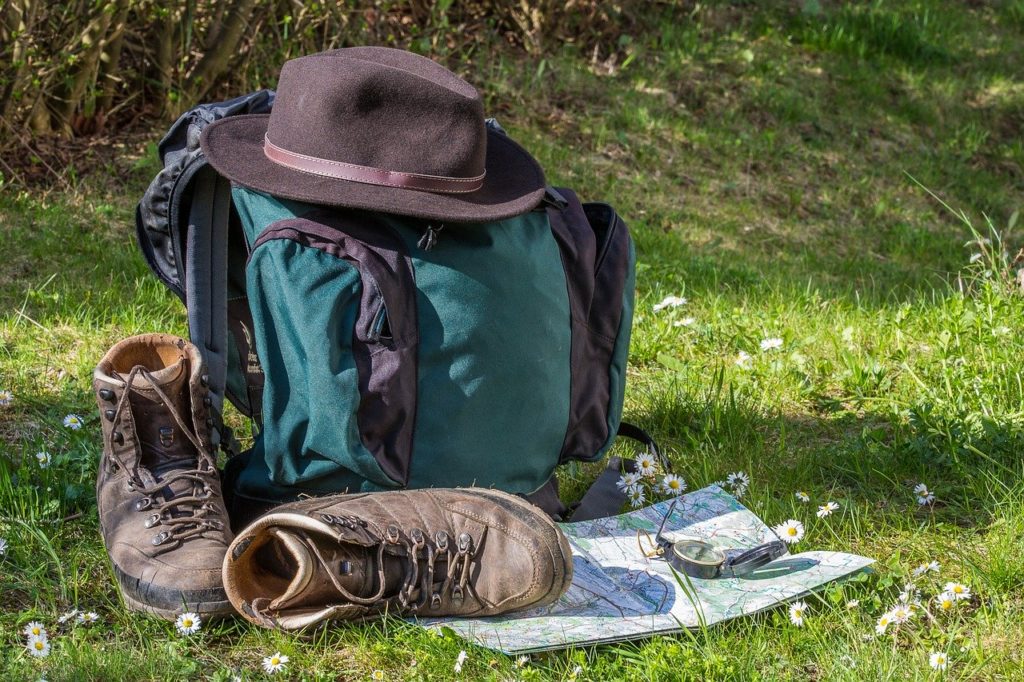
It's Time to Get Building!
I can already hear some of the gears turning. Some of you are thinking through your plan and ready to research!
Others, I’m sure, are feeling overwhelmed and lost. Maybe you’re even thinking you can’t afford it or do it right, so why bother?
Well, however you’re feeling, rest assured, I don’t plan to leave you hanging! Today’s goal was to convince you that you need a get home bag. I’m already working on a post to walk you through the process at 3 different budgets!
Are you ready to get started?
For those of you who already have a get home bag, or plan to create one, I’d love to hear more about your motivations and ideas. Why do you want to build a get home bag? How did you get started? Let us know in the comments section!

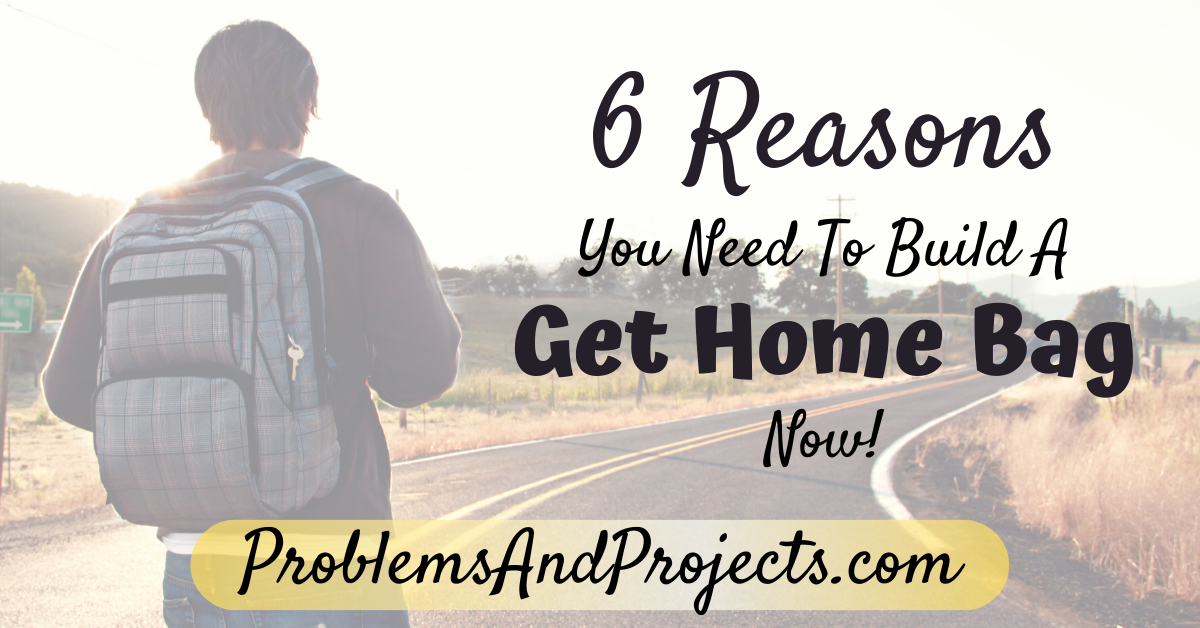



340155 636419Awesome inkling Grace! ego was luxurious youd bring about this about your biz bump into upstanding lineage. We reason you! 825573
I haven’t heard of this type of bag, but I have heard of a survival bag to grab in case of an emergency! Thank you for sharing this!
You’re welcome!
Great advice! Living in the Bay Area, I’m susceptible to earthquakes. I have a home kit, but I keep meaning to start a car kit as well.
-Hillary
Definitely a good idea!
Oh my gosh I love this so much. It’s funny I’m reading this today because my neighbor just said he always carries a water canteen in his car in case he gets stuck out in the boonies when he visits his wife. 😂
I laughed at the time but then got to thinking, if I ever got “stuck” anywhere I’d have an empty lunch box and a dead iPod.
I can’t wait to read more of your posts. This was amazing!
I’m glad you found this to be helpful! It’s amazing how much we realize we need to be ready for emergencies when we do to think about it!
I’ve never heard of creating one of these bags before but it’s a very good idea – seems almost obvious when you think about it!
I never thought about it either until I started doing some research. Just made sense after that!
I keep an emergency kit in our jeep. It’s a little different from the things mentioned here, but has many of the same items. While I’ve never had to use it personally, I have stopped to help a stranger and it has helped. She had been in a car accident in the winter and I was able to use the emergency blanket to wrap around her and help warm her up as we moved her to sit in my jeep, where she could snack on one of the granola bars we also kept there. She was so appreciative that we were prepared. The first aid kit is also a must – both a full size one in the jeep and a smaller one that I keep with me when I’m out travelling away from the vehicle.
Totally agree on the first aid kits! You can never have too many. I’m glad you were able to help someone else in need.
This is such a helpful and important post. As I have always spent about 99% of my time at home, and anywhere in tow is within a 20 minutes walk of home, my get home bag needs are very minimal. But any time I do go out, especially if I leave town, I always make sure I have a bag with me just in case and it has been surprising how many times I have needed something in it, even if it was just a snack or bottle of water.
It definitely doesn’t have to be complicated! I’m glad that you try to prepare even though you don’t have far to go!
After experiencing a wildfire that burned down much of our city three years ago, we put together a Go Bag containing the essentials we’d need if we had to evacuate our house in a hurry. I never thought about having a Get Home Bag, but I can see how it would be just as useful. The power goes out at my job frequently enough that I’ve stashed a couple of flashlights and snacks in my desk at work. We usually always keep mini-first aid kits, snacks & reusable eating utensils in the cars, but based on your article, I’d like to put together a more formal Get Home Bag. I might store my hiking boots, extra socks, and a change of clothing in the car now, too.
I’m so sorry that happened to you, but it’s good that you used the experience to learn and grow. My get home bag has been pretty low on my list, but I’m definitely getting the urge to be safe rather than sorry. Glad you found this to be useful!
Essential post during recent pandemic
It’s definitely a good time to start thinking about these things!
This is such a great idea. I need to build a get home bag too. It’s always good to be prepared. Thanks for sharing!
Glad you enjoyed it!
This is such an interesting post! I’ve kept a go bag in case something happens and I have to leave home, but I’ve never really thought about having a get home bag! And it makes sense, because as you say, until recently it was more common to be away from home for most of the day!
It’s been pretty low on my list, too. I’m feeling a lot more motivated to prepare for the worst lately, so it’s time to start building!